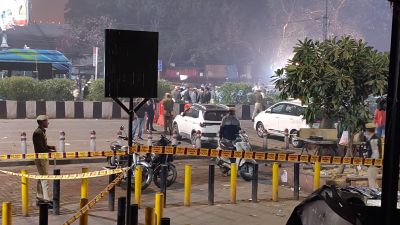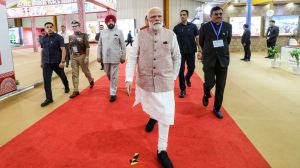A great start
After showing a negative growth in January, India's exports showed a remarkable recovery in February this year. Although exports clocked a...

After showing a negative growth in January, India’s exports showed a remarkable recovery in February this year. Although exports clocked a 9.74 per cent growth to $ 30.93 billion, our country is capable of achieving more. In this context, the export-friendly Exim policy will certainly trigger creativity in the exporting community to penetrate the global markets and enhance the Made in India’ image.
The setting up of special economic zones in different parts of the country on the model of China will certainly free the exporting community from the cobweb of rules and regulations and give a tremendous boost to our exports. However, there is also a need to review the existing bottlenecks and cumbersome procedures, whose contributions to country’s exports as of today is very negligible.
The suggestion for making labour laws flexible has been accepted and the proposal to declare units exporting more than 50 per cent of their turnover as essential public utility services will enable them not only to meet the commitment of timely exports, but may also enhance the prestige and image of the country. However, taking into consideration our experience of the labour problems in the essential public utility services, the exporters should have been completely exempted from the rigid labour laws.
Coming to the recent proposals, the government has given sufficient incentives to the knowledge-based pharma and chemical industry, encouragement for R&D for new molecules has been accepted. The simplification of procedures for export of Indian herbs and formulations and rationalisation of inspection norms for pharma products by allowing import of laboratory equipment, chemicals and reagents for R&D is a step in the right direction. However, keeping in view the enormous investment needed for R&D, at least 10% of the FOB value of exports should be allowed for R&D purpose.
It has also been recognised that the State Governments have an important and critical role of providing infrastructure and industrial and tax policy for sustainable export growth and at the same time, should be compensated for the loss of revenue. This problem has been addressed and the provision of Rs 250 crore for this purpose will motivate and involve the State Governments to unleash the full export potential of the States and collaborate in our national effort to earn valuable foreign exchange for the country which will also reduce the burden on the exchequer.
The government has also addressed the need for compatibility with WTO norms which is reflected in the removal of QRs, SIL and phasing out of DEPB scheme by substituting with a common Duty Drawback Scheme. This will pave the way for transparency and competitiveness in our exports so as to meet cutting competition in the international markets as well as discourage the scope for counter measures like anti-dumping duties, anti-subsidies and NTBs.
It is heartening to note that advance licences will be exempt from payment of all kinds of duties. However, deemed exports have not been included even though we had proposed that the deemed exports should be treated at par with physical exports. Similarly, freedom to exercise the option of free replenishment certificate for importing inputs as per the standard input output norms will benefit the exporting community. The decision to phase out the DEPB scheme after March 2002 is a positive step in eliminating the criticism of the misuse of the scheme as well as making it WTO compatible.
(The author is chairman of Chemexcil and past president of FIEO)



- 01
- 02
- 03
- 04
- 05




























